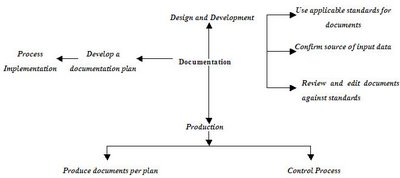Are you working as a documentation manager, whose job responsibilities involve hiring technical writers on a shoestring budget? Even if you are one in the making, this article might be very relevant to you. Most of what I am going to cover, relates to project management principles that can easily be applied to your line of work.
Let's say you have a new documentation project in the pipeline. You need to hire a group of technical writers and form a core team that caters to all project requirements. Since you are the documentation manager, the onus lies on you - not only to select the best resources for the successful completion of the project but also to provide an accurate estimate of costs. Please note, when I say "resources," it does not imply people alone, but includes facilities, equipments, materials, software, and expenses.
We all know that people are the most indispensable resource needed to successfully complete a project. They are a common resource for all projects. You also need facilities like conference rooms, offices, and presentation rooms to house the work for most projects and drive project schedules. Expenses such as travel, room and board, and supplies are important resources to consider as well.
The first thing you need to do is identify tools for determining the necessary resources for a project. There are five tools that can be helpful, namely:
- Work Breakdown Structure
- Historical Information
- Available Resources
- Experts
- Scope Statement
Work Breakdown Structure
As the name suggests, a Work Breakdown Structure (WBS) lists all activities and deliverables for the project. It is an effective tool to recognize the resources needed for individual deliverables. A WBS can either be activity oriented or deliverable oriented. For instance, consider a typical documentation project that involves planning, requirements analysis, design and development, editing, production, and release activities.
A WBS includes all these primary activities, which are then further drilled down to the smallest possible element. This provides an accurate estimate of what resources are required to complete the task. This way you can assign resources based on activity and figure out what resources you require for which activity (Refer to Figure 1. Work Breakdown Structure - Assigning resources based on Activity.)
Another way to identify resources using the WBS is through detailing the list of deliverables (Refer to Figure 2. Work Breakdown Structure - Assigning resources based on Deliverables.) You can assign resources for a particular deliverable based on the nature of the deliverable.
Historical Information
Checking a historical database for similar projects is another useful tool to determine resources, since some elements of previous projects may be the same as your current project. Past projects can provide useful information about the types and quantities of resources required for similar work. It is a good idea to start maintaining a database of historical information, in case you don't have one already. For instance, let's say someone from your team wrote a user manual for XYZ product. Because you use authoring tools such as Epic Editor, you create content in reusable components, independent of formatting. This content is stored in content management repositories such as Documentum or iFS and dynamically assembled on demand. If some information from that manual will be replicated in the Implementation Guide for the same product, you won’t have to reinvent the wheel.
Available Resources
When identifying the necessary resources for a documentation project, a description of available resources can be a useful tool. This information can usually be acquired from upper management, the project stakeholders, or whoever is in charge of providing project resources. Knowledge of the available resources will help you plan when to complete certain phases of the project. For example, if a functional manager requests technical writing from your team, you can check the availability of your writers by tracking their schedules and deliverables, and allocate roles accordingly. This might require some negotiation as well, especially if conflicting interests are involved.
Experts
Whenever you need to identify the necessary resources for a project, ask for expert recommendations. Experts are persons having knowledge or experience with similar projects. They can help you gain information about the needed resources, and their feedback can help you realize possible problems before they occur. Experts can include consultants, professionals from a particular genre, domain, or technology, people from other departments, subject matter experts (SMEs) and so on. In fact, your team members who have had the experience of working on similar projects can provide valuable inputs when identifying resources.
Scope Statement
A scope statement is another important tool used to identify project resources. It includes information such as a project's goals, time frame, deliverables, and so on. It can also help you determine if the resources are within the scope of the project. If not, then the project scope should be changed.
Using these fundamentals of resource identification, documentation managers can begin to estimate and manage project costs and budgeting activities. It will also enable them to use the identified resources for specific activities.
Your comments and opinions on this article are welcome. You can reach me at prabhakar.rahul@gmail.com


Comments
Post a Comment